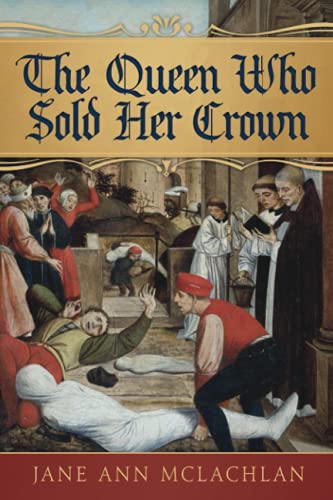The Queen Who Sold Her Crown (The Kingdom of Naples)
In the years 1347-1352, Joanna I nobly fights to preserve her kingdom of Naples against a rival king, a usurping husband, a papal inquest, and the Black Death.
Though her sister Maria of Durazzo narrates some chapters, most of the story belongs to Joanna, portrayed as proud, virtuous, and devoted to her duty. With the King of Hungary marching on Naples to avenge the murder of Joanna’s first husband, the resourceful queen marries her handsome cousin, Louis of Taranto, in order to have a defender. Betrayals send her fleeing to her realm of Provence, where her virtue, integrity, and belovedness help her clear her name against accusations of murder, and secure papal support for winning back her kingdom. But all her youth, beauty, and cleverness cannot save Joanna from the many dangers of her age: the ruthless ambition of men, the all-too-common death of children, and the plague decimating Europe with terrifying speed.
Though the realms outside Joanna’s circle of family, counselors, and servants never really come into focus, McLachlan builds engaging characters that hold up against the larger-than-life drama that surrounds them. The story’s heart rests on the clever strategizing of the two royal sisters, whose pedigree doesn’t shield them from the torments of rape and imprisonment by their husbands, nor the deaths of people they love. McLachlan depicts particularly well the horrors of the bubonic plague and the physical and moral devastation that resulted.
The prose is strong and clear, and the power plays among Europe’s elite are always an engaging saga. If this reader wanted McLachlan’s righteous, much-maligned Joanna to inherit more from the canny, self-serving vixen that some contemporaries and later chroniclers depicted her as being, the fault is all mine. This is a series well worth the time.










